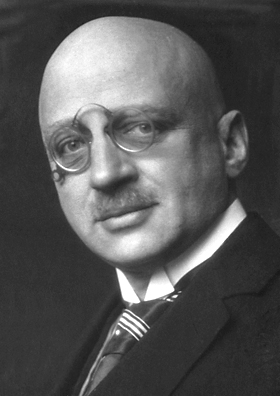|
Alan Gordon-Finlay
Alan Gordon-Finlay (8 June 1890 – 6 June 1959) was a British engineer and inventor of Scottish descent born in Australia. He is best known for having co-created the Filene-Finlay (incorrectly spelled Findlay) simultaneous interpretation system at the League of Nations in Geneva after the First World War, the first of its kind and the fore-runner to modern interpretation systems in use throughout the world today. A patent was purchased by IBM in 1930, taking it to global production. Early life Alan Gordon-Finlay was born on 8 June 1890 at Blytheswood in Turramurra, seven miles north of Sydney, Australia. In 1896 the family moved to London, where Finlay attended a number of private schools to nurture a young prodigious talent. In 1898, at the age of 8, Finlay announced that he would like to be an inventor and to earn money by publishing patents. He then proved his point by presenting his first patent: an electrical device for lighting a gas flame. Two years later, Finlay contract ... [...More Info...] [...Related Items...] OR: [Wikipedia] [Google] [Baidu] |
Turramurra
Turramurra is a suburb on the Upper North Shore of Sydney, in the state of New South Wales, Australia. It is located north-west of the Sydney central business district, in the local government area of Ku-ring-gai Council. It shares the postcode of 2074 with the adjacent suburbs of North Turramurra, South Turramurra and Warrawee. History Turramurra is an Aboriginal word which is thought to mean either ''high hill'', ''big hill'', ''high place'', or ''small watercourse''.McCarthy; 1963, cited in The Aboriginal reference of high hill covered the range from Pymble to Turramurra. Early European settlers referred to the area as Eastern Road. The district was originally known as Big Island, Vanceville and Claraville (after names of estates or grants), and further north as Tulip Scrub from the large number of tulips or waratahs there. Turramurra means "high hill" or "big hill". It was also known as Irish Town. More than 100 years ago remnants of a tribe of aboriginal people ... [...More Info...] [...Related Items...] OR: [Wikipedia] [Google] [Baidu] |
Gordon Highlanders
The Gordon Highlanders was a line infantry regiment of the British Army that existed for 113 years, from 1881 until 1994, when it was amalgamated with The Queen's Own Highlanders (Seaforth and Camerons) to form The Highlanders (Seaforth, Gordons and Camerons). Although the 'Gordon Highlanders' had existed as the 92nd (Gordon Highlanders) Regiment of Foot since 1794, the actual 'Gordon Highlanders Regiment' was formed in 1881 by amalgamation of the 75th (Stirlingshire) Regiment of Foot and 92nd (Gordon Highlanders) Regiment of Foot. History Early history The regiment was formed on 1 July 1881 instigated under the Childers Reforms as the county regiment of: Aberdeenshire, Banffshire, and Shetland. Although the regiment was formed by two regular regiments, it in fact controlled other units which were of the former Militia and Volunteer Force, including: * Regimental Headquarters & Regimental Depot at Castlehill Barracks * 1st Battalion (Regular, former 75th (Stirlings ... [...More Info...] [...Related Items...] OR: [Wikipedia] [Google] [Baidu] |
Second Battle Of Ypres
The Second Battle of Ypres was fought from 22 April – 25 May 1915, during the First World War, for control of the tactically-important high ground to the east and the south of the Flanders, Flemish town of Ypres, in western Belgium. The First Battle of Ypres had been fought the previous autumn. The Second Battle of Ypres was the first mass use by Germany of Chemical weapon, poison gas on the Western Front (World War I), Western Front. Background The Germans, German chemist Walther Nernst, who in 1914 was a volunteer driver, proposed to Colonel Max Bauer, the German general staff officer responsible for liaison with scientists, that they could empty the opposing trenches by a surprise attack with tear gas. Observing a field test of this idea, the chemist Fritz Haber instead proposed using heavier-than-air chlorine gas. The German commander Erich von Falkenhayn agreed to try the new weapon but intended to use it in a diversionary attack by the 4th Army (German Empire), 4t ... [...More Info...] [...Related Items...] OR: [Wikipedia] [Google] [Baidu] |
Military Cross
The Military Cross (MC) is the third-level (second-level until 1993) military decoration awarded to officers and (since 1993) Other ranks (UK), other ranks of the British Armed Forces, and formerly awarded to officers of other Commonwealth of Nations, Commonwealth countries. The MC is granted in recognition of "an act or acts of exemplary gallantry during active operations against the enemy on land" to all members of the British Armed Forces of any rank. In 1979, Queen Elizabeth II approved a proposal that a number of awards, including the Military Cross, could be recommended posthumously. History The award was created on 28 December 1914 for Officer (armed forces), commissioned officers of the substantive rank of Captain (land), captain or below and for warrant officers. The first 98 awards were gazetted on 1 January 1915, to 71 officers, and 27 warrant officers. Although posthumous recommendations for the Military Cross were unavailable until 1979, the first awards included ... [...More Info...] [...Related Items...] OR: [Wikipedia] [Google] [Baidu] |

